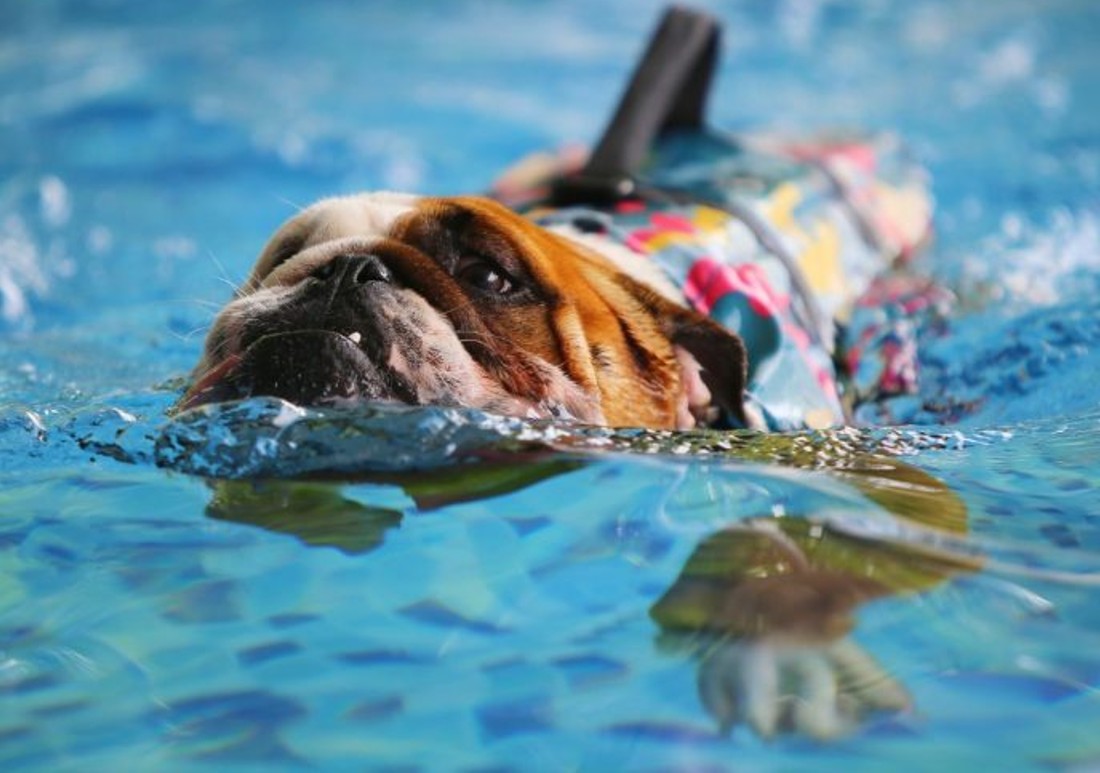Dog Swimming: How To Safely Teach Your Pup To Swim

Seeing a dog gleefully splashing in the water is a heartwarming image that captures the essence of canine joy. Many dogs are naturally drawn to water, whether it’s a serene pond, a shimmering pool, or the ocean’s vastness. However, just like humans, not all dogs are born swimmers, and some may need a bit of guidance to navigate this aquatic adventure safely.
In this guide, we’ll explore how to introduce your furry companion to the world of swimming in an enjoyable, positive, and, most importantly, secure way. With a combination of patience, preparation, and a sprinkle of enthusiasm, you’ll soon have your pup confidently paddling alongside you in the water.
Assess Your Dog’s Comfort Level
Before diving into the water, assessing your dog’s comfort level around the water is important. Some dogs are born water enthusiasts, while others may be hesitant or even fearful. Expose your pup to water gradually. Start with shallow water and observe their reaction. If they seem anxious or resistant, don’t force the issue. Instead, work on building their confidence around water.
Choose the Right Location
When it comes to introducing your dog to swimming, the right location matters. Opt for a calm, shallow area with minimal currents. A dog-friendly beach or a swimming pool with a gentle slope is ideal for beginners. Avoid places with strong waves or fast-moving water, as these can be overwhelming for a first-time swimmer.
Gather the Right Gear
Just like you’d wear appropriate gear when swimming, your dog could also benefit from some specialized equipment. A well-fitting dog life jacket can provide extra buoyancy and security, especially for dogs new to swimming. Make sure the life jacket is comfortable and doesn’t restrict their movement.
Positive Association
Create a positive association with the water by bringing along your dog’s favorite toys and treats. This can help them associate the water with fun and rewards. Gradually introduce them to the water’s edge while enjoying and relaxing the experience.
Take It Slow
The key to a successful introduction to swimming is patience. Don’t rush the process. Start by walking your dog into the water while holding their leash so they can get used to the wet sensation. Praise and reward them for their bravery. As they become more comfortable, allow them to venture a little deeper, always keeping a close eye on their body language and comfort level.
Support and Encourage
Your presence and encouragement can greatly impact your dog’s confidence. Stay close to your pup, offering gentle support and reassurance as they enter the water. Keep the experience positive by using encouraging words and petting them. If they start to paddle, praise them enthusiastically.
Gradual Depth Increase
You can gradually increase the depth as your dog becomes more comfortable in the water. Allow them to explore deeper water at their own pace. Be prepared to assist if they show signs of struggling or becoming anxious. Remember, every dog is different; some may take longer to adjust.
Teach Basic Swimming Movements
If your dog shows interest in paddling, encourage them to do so gently. Support their hindquarters and guide them through the motions. Use treats or toys to motivate them to move their legs. The goal is to help them understand the movements required to stay afloat.
Exit Strategy
Teaching your dog how to exit safely is just as important as entering the water. Show them where the shallow end or a gently sloping exit point is. This way, they’ll know how to get out of the water if they become tired or overwhelmed.
Know When To Call It Quits
Not all dogs will take to swimming right away, and that’s okay. If your pup seems stressed, scared, or overly tired, it’s best to call it a day. Respect your dog’s comfort level and give them ample time to adjust. You can always try again another day.
Rinse and Dry
After a swimming session, make sure to rinse your dog’s coat thoroughly to remove any chlorine or salt residue. Dry them off completely to prevent skin irritation or discomfort.
Professional Guidance
If you’re unsure about teaching your dog to swim, or if your dog seems particularly anxious around water, consider seeking professional guidance. A professional dog trainer or behaviorist with experience in aquatic training can offer valuable insights and techniques.
Final Thoughts
In conclusion, introducing your pup to the joys of swimming can be a rewarding experience for both of you. Patience, positive reinforcement, and gradual exposure are the keys to success. Remember that every dog is unique, so be attentive to your dog’s needs and comfort level. With the right approach, your furry friend could soon become a confident and enthusiastic swimmer, ready to enjoy splashing around in the water whenever the opportunity arises.
Your Pet’s Best Interest, Always
At Pet Institute, we take pet care seriously. We're dedicated to transparency, impartiality, and the well-being of your pets in every article, review, and recommendation we provide. Our unwavering commitment to these principles ensures that you, our valued reader, always receive reliable and unbiased information. Let us be your trusted guide in the world of pet care and companionship.